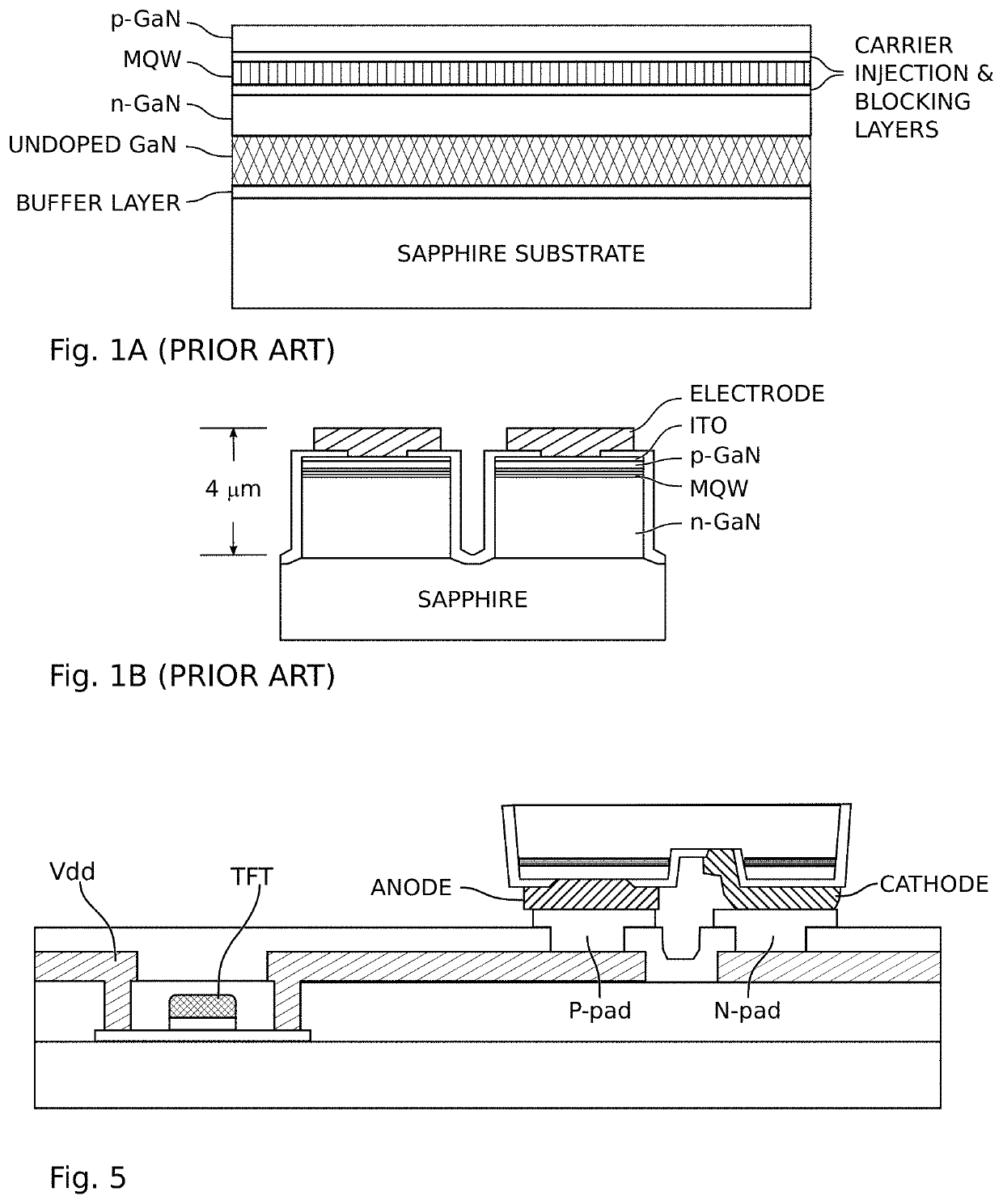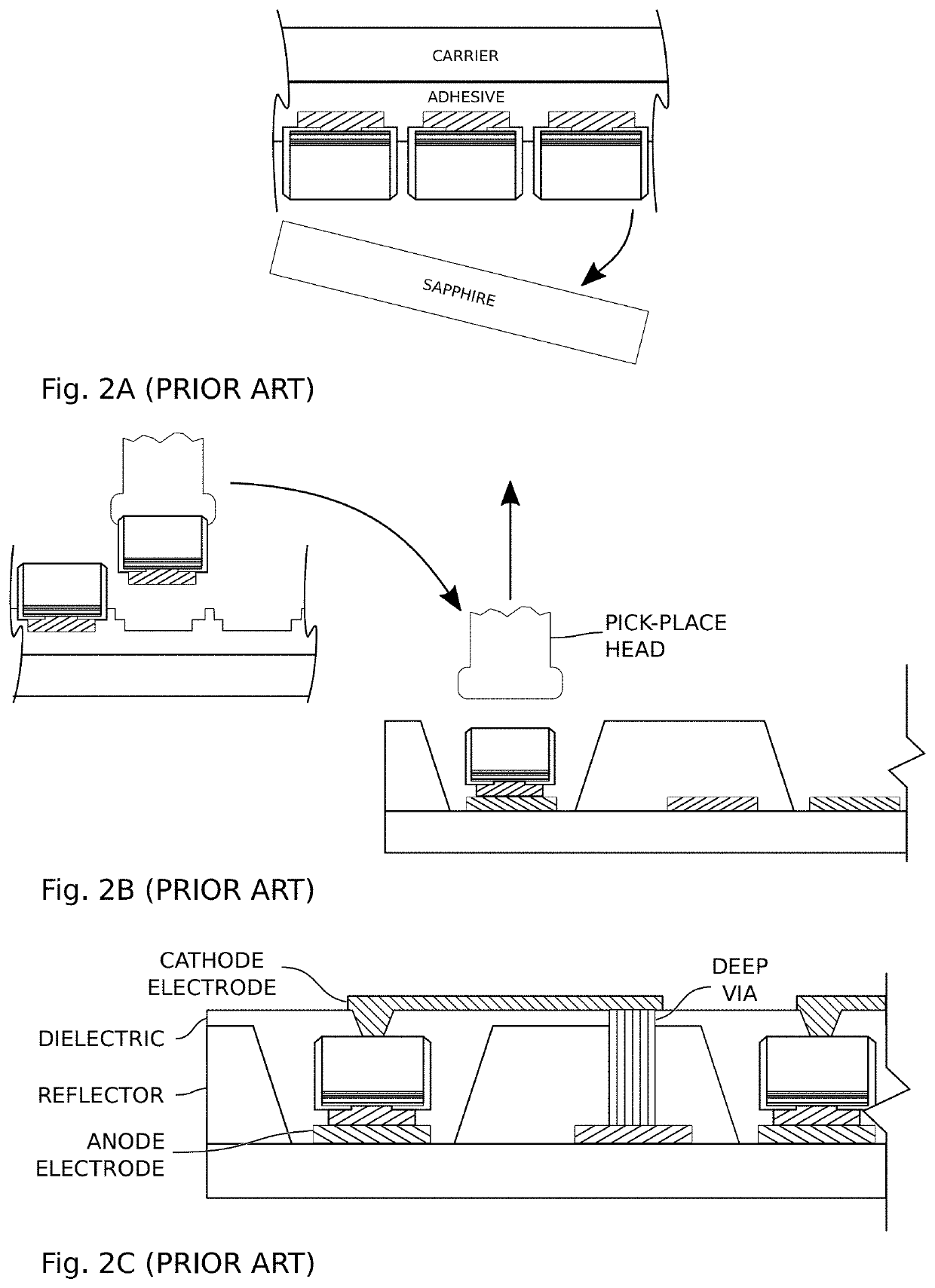Fluidic Assembly Enabled Mass Transfer for MicroLED Displays
a technology of fluidic assembly and micro-leds, which is applied in the direction of semiconductor/solid-state device manufacturing, electrical equipment, semiconductor/semiconductor devices, etc., can solve the problems of image burn-in, limited contrast ratio, and less than 4% efficiency of lcd displays
- Summary
- Abstract
- Description
- Claims
- Application Information
AI Technical Summary
Benefits of technology
Problems solved by technology
Method used
Image
Examples
Embodiment Construction
[0066]The general process for making a microLED display using inorganic LEDs and fluidic assembly on a display backplane has been reported in U.S. Pat. Nos. 9,825,202 and 10,418,527, which are incorporated herein by reference. In particular, the process flow for making a suitable display backplane is described in U.S. Pat. No. 9,825,202 starting at Col. 13 ln. 26, and shown in FIG. 17. The electrical requirements are described in pending application Ser. No. 16 / 727,186, which is also incorporated herein by reference. The display substrate used herein has the same row and column arrangement and thin-film transistor (TFT) circuits as previously described in U.S. Pat. No. 9,825,202 in FIGS. 14B and 14C, but there is no well layer because the mass transfer stamp sets the location of the microLED.
[0067]FIG. 5 is a partial cross-sectional view of an exemplary backplane arrangement showing one surface mount microLED and the power transistor which controls the brightness of the microLED.
[00...
PUM
| Property | Measurement | Unit |
|---|---|---|
| diameter | aaaaa | aaaaa |
| thickness | aaaaa | aaaaa |
| diameter | aaaaa | aaaaa |
Abstract
Description
Claims
Application Information
 Login to View More
Login to View More - R&D
- Intellectual Property
- Life Sciences
- Materials
- Tech Scout
- Unparalleled Data Quality
- Higher Quality Content
- 60% Fewer Hallucinations
Browse by: Latest US Patents, China's latest patents, Technical Efficacy Thesaurus, Application Domain, Technology Topic, Popular Technical Reports.
© 2025 PatSnap. All rights reserved.Legal|Privacy policy|Modern Slavery Act Transparency Statement|Sitemap|About US| Contact US: help@patsnap.com



